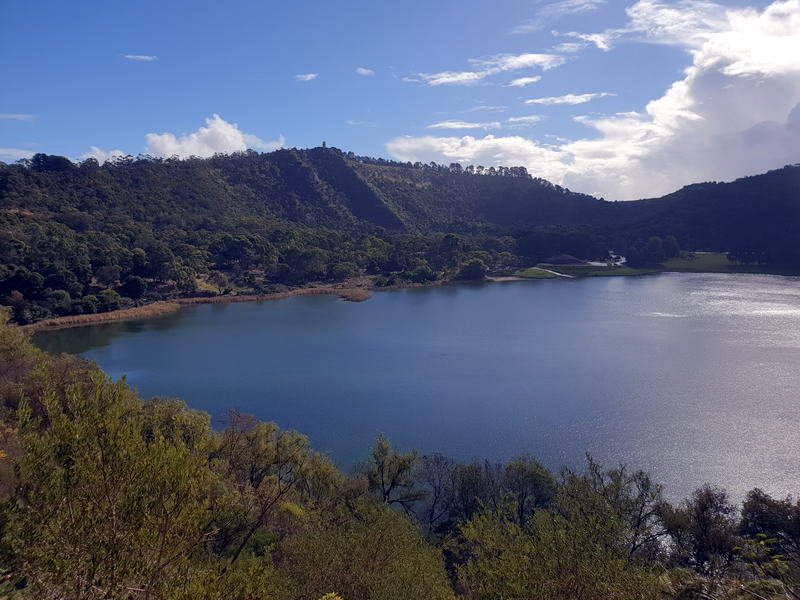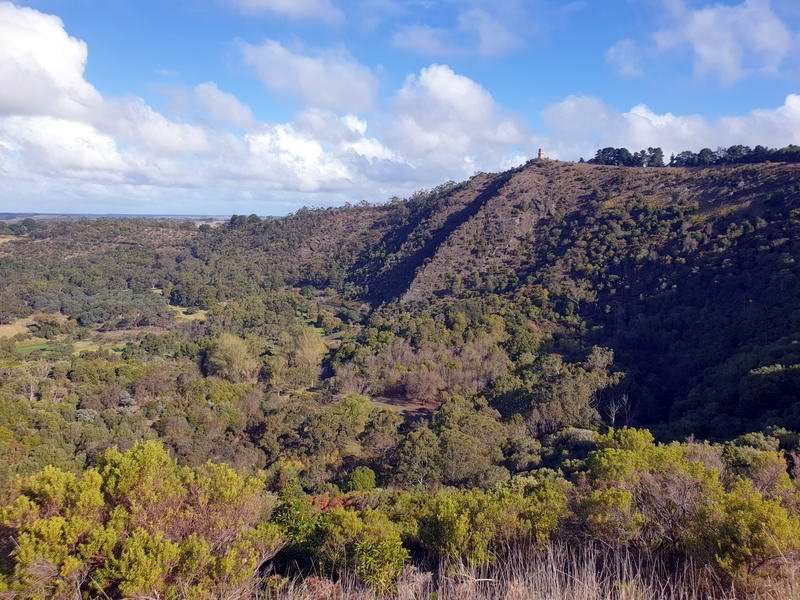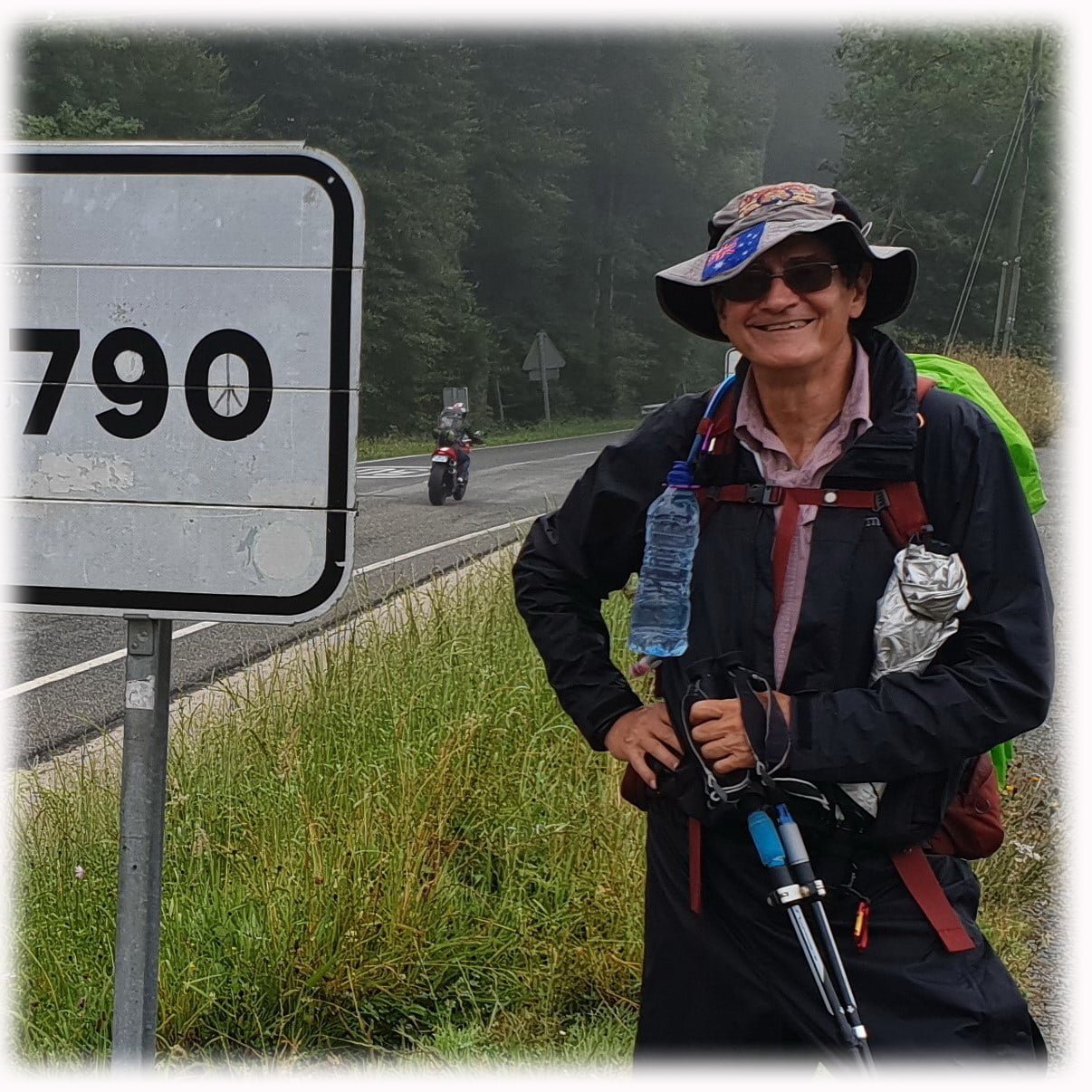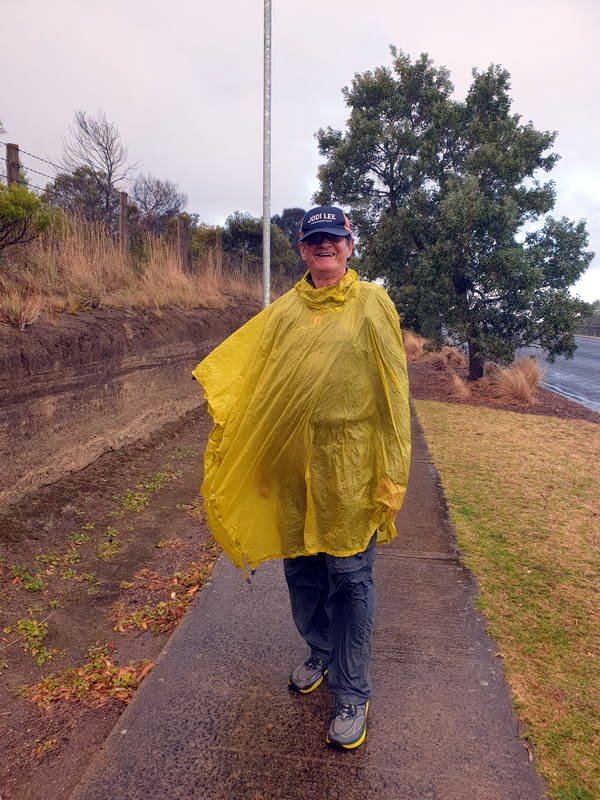Walking laps around the Mount Gambier craters is my home training ground as these are the only significant hills close by. Todays walk is both to do some hill training for the upcoming Jodie Lee 80k in 2 days Challenge for Bowel Cancer Awareness and to try out a Sea 2 Summit poncho tarp.


This is a significant change in wet weather gear. My preferred wet weather gear is a Euroshim trekking umbrella and a Marmot light weight waterproof jacket and Burghous pants for when an umbrella is no use i.e. drizzle and strong wind and rain. Together the rain jacket and pants weigh around 1kg. If I ever get to walk the Camino Francegina from Canterbury to Rome I may need some form of shelter as finding accommodation on this route in France can pose some difficulties. Carrying a tent is too heavy for a ‘just in case’ scenario.

To kill 2 birds with one stone I have opted for the Sea to Summit ultra-sil poncho tarp.
What is a Poncho Tarp
A Poncho Tarp is a lightweight, minimalist piece of backpacking equipment which, as the name suggests, doubles as both rain gear and shelter. As a bonus, it also makes for an excellent pack cover.
It only weighs 230 grams will replace my jacket and pants saving a significant 760 grams grams. With the use of hiking poles the poncho tarp can also provide an emergency shelter to sleep under if ever needed.
The Poncho Tarp as a Poncho
The day of the test was a good Mount Gambier 4 seasons in one day. Warm and dry, cool and windy and wet. The walk around both Mount Gambier craters is 10 km and about 2 hours with enough time to get hot and sweaty on the steep climbs in the sun and also experience the cold windy horizontal rain squalls at the top and on the downhills.

I have never used a poncho before so this is a first for me. I started the walk on the East side of the Green Lake crater rim in wind and light rain. Putting an ultra-lite poncho on in the wind is a bit of a challenge as it flaps around a lot. On the plus side there is no need to take the pack off as the poncho just goes over everything. With the poncho on, I head off into the wind and rain which then immediately stopped and the sun came out! This is where the ease of using a poncho became apparent. Just a few seconds to take it off over my head and crunch into a ball and carry. The walk to the tower was pleasant and I made the steep climb to the tower without having to stop to catch my breath.
Sure enough after about 5 km a sudden rain squall came along, now having some practice I had the poncho over the head and on in no time. This time the rain was heavy with a strong wind. The Poncho does flap around in the wind and I had a belt made of shock cord with me for just this scenario. The shock cord belt did bring the flapping under control but then you cannot put your arms inside the poncho out of the cold wind and rain. I was not using hiking poles so I found it easier just to hold onto the sides of the poncho from the inside. There is still enough play to swing your arms normally. If using hiking poles the use of waist strap would be the way to go.
After the squall passed I continued to wear the poncho to let it dry and see how it was on the next steep uphill section just past the Blue Lake lookout. Inside the poncho it stayed airy and cool and unlike a wet weather jacket there was no condensation build up on the inside. With a rain jacket I would need to stop take off the pack and jacket, use a pack rain cover, then put the pack back on and repeat for every shower or just continue to wear the jacket and get wet on the inside anyway from condensation.
The most important finding is that I stayed completely dry from just above the knees up. Much drier than if I had been wearing rain jacket.
My conclusion. The poncho requires a little more effort in windy conditions however is far more adaptable to changing conditions. There is no need to stop to don and take off the poncho as you walk.
Poncho Tarp as a Shelter
This is a back yard overnight test sleeping under the poncho tarp

